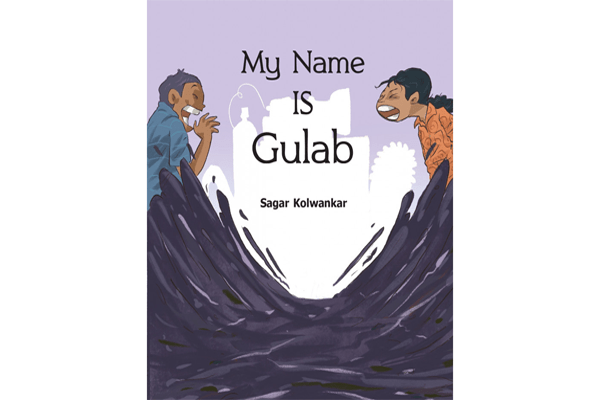
Loading...

Loading...
LOOP: A Silent Story of Habitat and Environments
This wordless picture book by Eklavya takes us through various complexities of the environment. I loved the concept of this book. There are only few books that capture environment in such a way.
The book tells many grave and crucial stories at once: – that of a one-dimensional rat race of development, of the breakdown of senses and of collective madness. It’s astonishing how a small book of 20 pages can say so much. This story of environmental concerns is not being told for the first time. There are many books that have been written around this concern, yet this story stops the readers on every page, and takes them at its own pace. Simple in its visual appeal yet manages to convey a deep message about nurturing the environment and protecting it from unnecessary changes.
The size of this picture book is very small, but the illustrations evoke a sense of intrigue and makes the reader wonder what is going to follow next. Every line seems to be an event. The reader may not realize but soon feelings and thoughts start taking the shape of an idea. Throughout the book, illustrations are in black and different shades of grey on a brown paper, having no traditional attractive colours. Overall, this style of presenting non-fiction is interesting and is more than informational.
After reading the first few pages, it may seem like a simple story about the forest and its animals. However, the story gradually unfolds a bigger issue of the environment. The first page and the initial few sketches lead the reader to nature’s virtuous cycle of the growing of a small plant. The plant grows into a tree while different forest animals come to interact and eventually build a home in its branches and live under its shade. The animals and the tree grow together as if they are all one big family. The image shows the expanse of the tree; and at the same time, it also shows how all the animals reside peacefully on its branches. However, I am not sure what the reaction of a young child will be on seeing an elephant climb over the tree!
One after the other, this book takes the reader through a series of powerful sketches. A small plant is not only a source of food for animals, but it is also a home for them. It gives us an opportunity to think about how nature fulfils the needs of all living beings.
The entry of human beings for their own needs, has not only threatened the existence of all other creatures, but also has become the cause of destruction for themselves.
The specialty of this book is that nothing happens suddenly, everything seems to be the result of a process. Small creatures come first and then big ones. If you look carefully, there is a sense of peace on the face of every animal, there is no war. Many animals cooperate with each other in harmony, but as human beings arrive, things start changing. The last few pages indicate that the era of disintegration begins with the onset of industrialization.
Initially, there is peace reflecting in the eyes of elephants, deer, rabbits and flying birds. Then the scenario changes, the tree is falling in front of them. There is frustration in everyone’s eyes on the subsequent pages and then everything comes to a standstill. The turn comes when we see a human hand uprooting the tree and, in its place, planting an electricity transmission tower. The towers are big; perhaps even bigger than the tree they replace. The animals look amazed and somewhat curious at the new installation. They even try to interact with this thing but soon realise that it will not sustain them.
In the last two pages, animals and the forest are nowhere to be seen and instead, a row of electricity transmission towers have taken over the entire landscape. There are some obvious processes that take place in nature, to protect and nurture multiple forms of growth and continuity in term of life cycle. And each of such processes carry a very deep meaning and the most complex loops of life. This significant point is well-covered in this book which renders a large readership and therefore cannot be called a picture book meant only for children. Though it is the story of a loop but that also does not get completed. It means different things to different readers, so when life ends abruptly on the last page – only signs of industrialization remain – it leaves the reader with a range of questions!

हिन्दी में बच्चों और किशोरों के लिए रचित साहित्य के क्षेत्र में हाल के वर्षों में गुणात्मक परिवर्तन आया है।नये प्रयोगों और विषय की विविधता के साथ उर्वर कल्पनाशीलता ने सर्वथा…

Some books make you sit up and think. My Name is Gulab is one of those. It takes you out of your own little world, made up of your own little concerns…